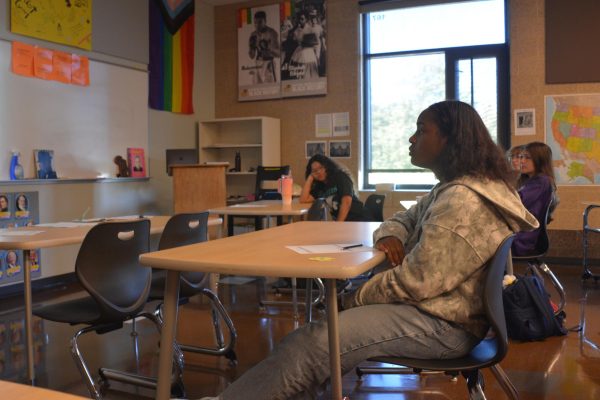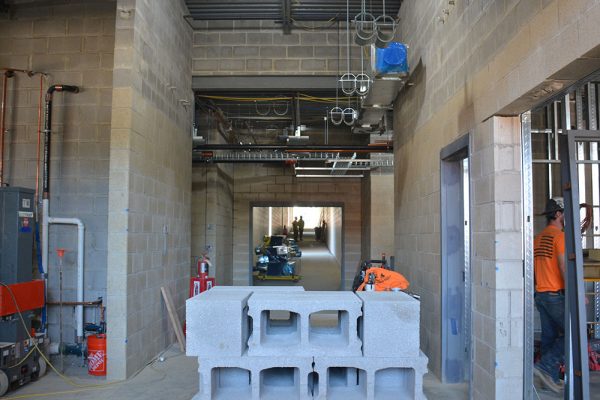Responses Mixed to Increased AP Enrollment
The administration has made it a goal over the past two years to increase enrollment in AP classes, a move which has been largely successful, resulting in both excitement over new opportunities and dismay about possible consequences.
“Over the last two years there has been a 53% increase in AP course enrollment,” Principal Ed Klein said. “[There have] been an additional seven AP classes added, including dividing AP Physics B into AP Physics One and AP Physics Two.”
This year there are 196 students enrolled in AP courses who will take an anticipated 471 tests.
The chart below, which Klein provided to the Beachcomber, shows the increase in AP enrollment since 2008:
APEnrollment-Sheet1
“That kid who can [handle] one AP class and isn’t [taking] one right now, that’s the kid I want to get involved,” Klein told the Beachcomber in early 2013.
“Learning how to be successful in a more rigorous course also transfers to college where classes are consistently difficult,” guidance counselor Ashley Saferight said.
School ranking lists such as the US News Best High School ranking use AP enrollment percentages as a significant part of their evaluation process.
Teachers, on the other hand, are more concerned about possible negative impacts.
“I have mixed emotions,” AP Language and Composition teacher Peter Harvan said. “Philosophically, I agree if a student can get a three, they should [be allowed to enroll in] and are welcomed into the course. From what I understand, the administration is looking for students who can earn threes and above. Looking at my class this year, I would say they’re all capable of that.”
“With all the pressure that schools are under to reach certain rankings, the danger is that we could lose track of the student in relation to this push,” Harvan said.
“[We] struggle on our end because we’re on the front lines with the kids, so if a kid is being pushed into taking too many APs, that’s a struggle for us,” AP Economics teacher Pam Ogilvy said. “We don’t want to see kids get burnt out, overwhelmed and bite off more than they can chew.”
US News’ “Best High Schools Rankings,” the Daily Beast’s “Top High Schools” and the Washington Post’s “Most Challenging High Schools” all rely on AP enrollment as an important factor, including passing rates and enrollment rates.
Beachwood was ranked 64th on the 2014 US News list, behind schools like Orange or Solon, which have significantly higher rates of AP enrollment than Beachwood. The 2014 list used data from the 2012-2013 school year. Since the major enrollment increase began in the 2013-2014 school year, Beachwood appears poised to rise in these rankings.
“For me [national rankings are] not a factor at all,” Saferight said. “If a student says that he or she wants to go to a given college- maybe we need to bump up the challenge and the rigor a little bit. I think it does do a disservice when that is the one rating that impacts [school rankings] more than anything.”
“I think a more legitimate indicator would be the passing rate of the kids we have in APs as opposed to kids who take the test,” Ogilvy said.
Students seem to have mixed emotions on the administration’s emphasis on AP classes.
“I kind of thank them for it because it’s better that I get into [AP classes] now than [later] because I’m scared and may not be willing to go into them later,” junior Terence Jayapuram said.
Other students have expressed this reluctance to take certain AP courses too.
“I wanted to take physics, but I didn’t want to take AP, so now I’m in earth science,” said junior Hannah Sullivan. “But I’m also in AP Econonomics and I like it.”
“They stress it because if you do well it will look good [when applying to college], but they don’t really tell you the other side if you don’t do well,” junior Bennett Woomer said. “The guidance counselors make it sound like if you don’t take [AP classes] you’re wasting your [talent].”
“For me, I wanted to drop AP physics because school isn’t my top priority,” senior Hannah Lowenkamp said. “To drop AP Physics took two weeks and so many fights between my mom and the administration. It had to go all the way up to Mr. Hardis to get it settled.”
“A lot of kids are intimidated because they don’t want to drop it because they don’t want the fight,” Lowenkamp said.
Still, staff members are working to help students succeed in AP classes.
“We’re trying to put in a lot of support mechanisms,” Saferight said. “Teachers are putting in a lot of work with AP class-specific academies and help for their students. I want students to take the step, to challenge themselves.”
“One of the district initiatives is to increase AP enrollment, and while that is important to me, I also love teaching AP Econ, I love having kids in my class,” Ogilvy said. “If it helps the district too, that’s great.”
“The continued growth in enrollment comes down to our students feeling that they can do well,” Klein said.










